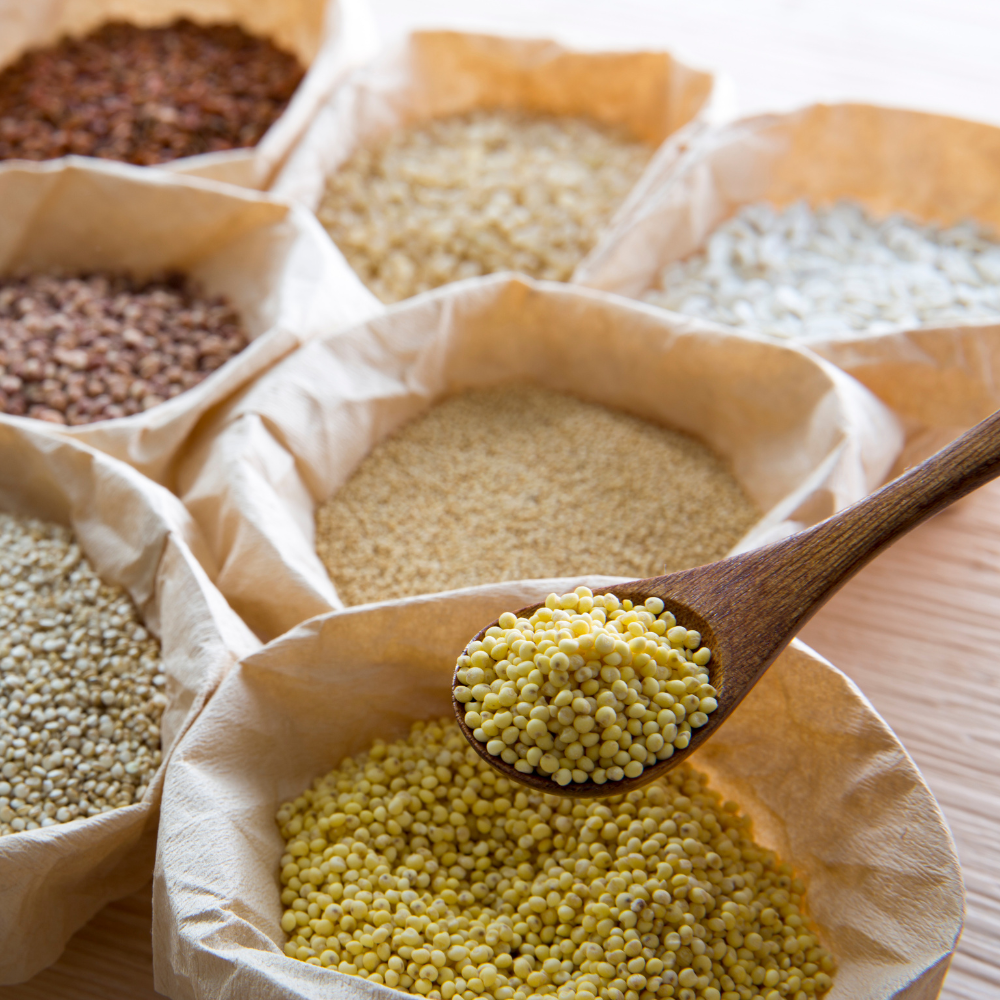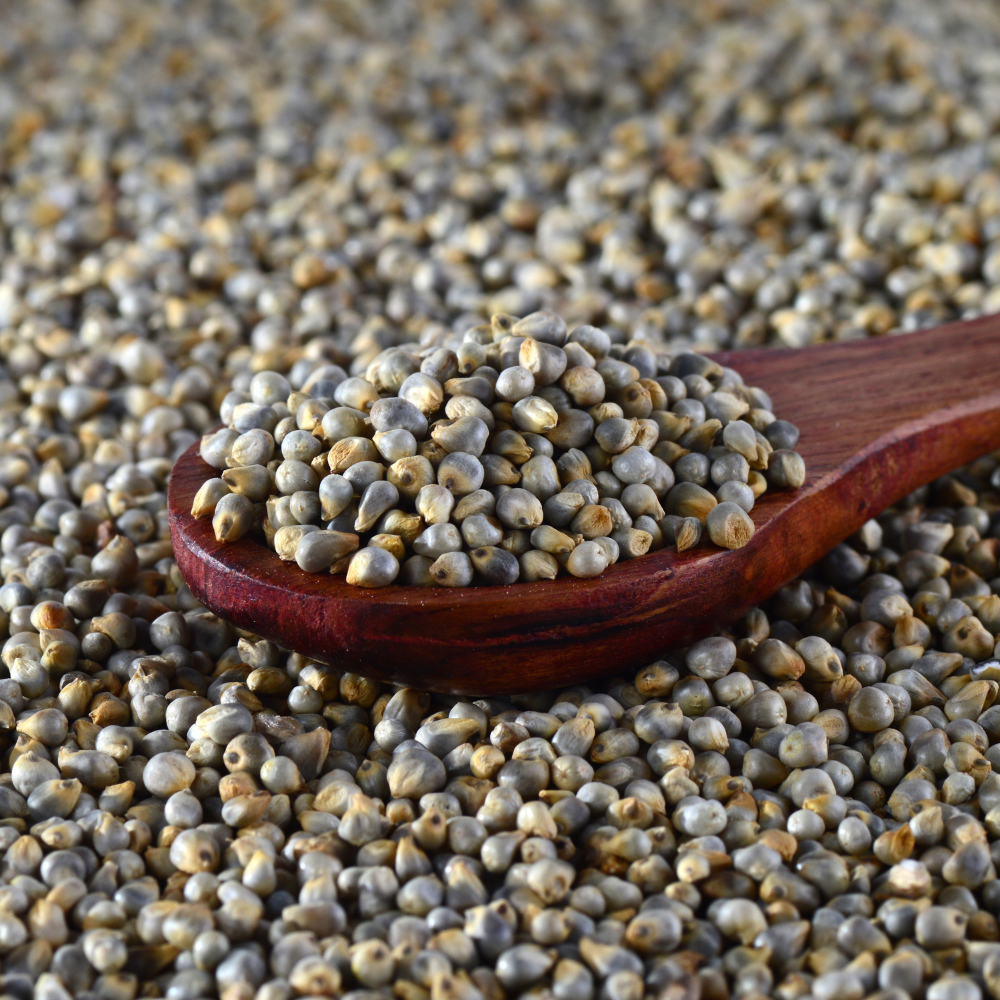Imagine you're stepping back in time into a world where our ancestors knew the value of each grain they grew and consumed. In that world, one tiny grain—the Little millet—held a special place. And today, with the revival of ancient grains in our diets, Little millet is once again becoming a star.
You might be wondering, "Why should I care about Little millet?" Well, the answer lies in the surprising array of benefits this tiny grain offers.
It is packed with nutrients, gluten-free, and versatile enough to be used in a wide range of dishes. Plus, if you're trying to lose weight or keep your blood sugar levels in check, little millet could be a game-changer.
So, why not get to know this grain better? In this article, you'll discover several Little millet benefits, its nutritional content, the variety of ways you can use it in your kitchen, and the importance of little millet in creating a sustainable food system.
Are you ready to dive in and find out more about this amazing grain? Let’s get started.

|
TABLE OF CONTENTS
|
What is Little Millet?
Before we dive into the other sections, we first need to know “what is Little millet?” Little millet, scientifically known as Panicum sumatrense, is a small-grained cereal belonging to the millet family. Its history dates back to thousands of years in India.
It is grown mostly in Southern India. This hardy crop thrives in diverse agro-climatic conditions, making it a sustainable option for farmers. Little millet is resistant to pests and illnesses, making it a good choice for organic farming.
With its nutty flavour and versatile culinary uses, little millet has gained popularity as a nutritious and environmentally-friendly grain option. Little millet benefits are far ahead of what we think.
Nutritional Value of Little Millet
Before we dive into the section on little millet benefits, let’s find out its nutritional profile. Little millet is a nutritious and gluten-free grain that is widely consumed in various parts of Asia, especially in India. Here is little millet nutritional value per 100g:
|
Nutrient |
Amount per 100g |
|
Calories |
378 kcal |
|
Carbohydrates |
60.9 grams |
|
Protein |
9.7 grams |
|
Fat |
5.2 grams |
|
Fibre |
7.6 grams |
|
Calcium |
17 mg |
|
Iron |
9.3 mg |
|
Thiamine (B1) |
0.30 mg |
|
Riboflavin (B2) |
0.09 mg |
|
Niacin (B3) |
3.2 mg |
Source: https://www.nutritionfact.in/faqs/what-is-the-nutritional-value-of-little-millet-per-100g
Little Millet nutrition values vary by source, processing, and cooking technique; thus, tiny differences should be noted.
Culinary Uses of Little Millet
Little Millet, with its versatile nature, can be incorporated into various culinary creations. From savoury dishes to desserts, it offers a range of possibilities for innovative and delicious recipes.
Traditional Culinary Practices Involving Little Millet
Little millet has been a staple in traditional culinary practices across various cultures. It is commonly used to prepare dishes like porridge, upma, and pulao.
The grains are often roasted to enhance their nutty flavour before being cooked. Little millet's small size and quick cooking time make it convenient for everyday meals.
These traditional methods of cooking little millet have been passed down through generations, showcasing its cultural significance and culinary versatility.
Versatility in Different Types of Dishes
Little millet's versatility shines through its ability to be incorporated into various dishes. It may replace rice or other grains in pilafs, salads, soups, and desserts.
Little millet recipes range from traditional upma and pulao to innovative creations like stuffed bell peppers and kheer.
Its adaptability allows for the exploration of diverse flavours and textures, making little millet an excellent choice for those seeking culinary experimentation while reaping its nutritional benefits.
Recipes and Meal Ideas Incorporating Little Millet
- Little Millet Salad: Combine cooked little millet with colourful vegetables, herbs, and a zesty dressing for a refreshing and nutritious salad.
- Little Millet Upma: Prepare a flavorful upma by sautéing onions, vegetables, and spices and then adding cooked little millet.
- Little Millet Pulao: Cook little millet with aromatic spices, vegetables, and broth to create a flavorful and wholesome pulao.
- Little Millet Kheer: Simmer cooked little millet in milk with sugar, cardamom, and nuts for a delicious and nutritious dessert.
- Little Millet Stuffed Bell Peppers: Fill bell peppers with a savoury mixture of cooked little millet, vegetables, and spices, and bake until tender.
The options are infinite. Little millet adds flavour and texture to savoury and sweet meals without sacrificing health. Experimenting with little millet opens up a world of culinary innovations and nourishing meal options. Now let’s dive into our main section on little millet benefits.
Health Benefits of Little Millet
Little millet, known for its small grains, packs a big punch when it comes to health benefits. From aiding digestion to supporting weight management, little millet benefits encompass improved heart health, enhanced nutrient absorption, and overall well-being.
Let's explore some of the little millet benefits in brief.
1. Low Glycemic Index
Little millet’s glycemic index is low. It raises blood sugar slowly due to its low GI. This makes it an excellent choice for diabetics and blood sugar management.
Foods with low GI values are digested and absorbed more slowly, providing sustained energy and helping prevent spikes in blood sugar.
Little millet's low GI makes it a favourable choice for maintaining stable blood sugar levels.
2. Dietary Fibre
Little millet benefits also include its high dietary fibre content, which promotes digestive health. The fibre in little millet helps maintain regular bowel movements and prevent constipation.
Additionally, it supports a healthy gut by providing bulk and aiding in the smooth passage of waste through the digestive system.
Including little millet in your diet can contribute to a well-functioning digestive system and reduce the risk of gastrointestinal disorders.
3. Gluten-Free
Another Little millet benefits is that it is naturally gluten-free, making it perfect for those with Celiac disease and gluten sensitivity.
Gluten-free diets can safely incorporate Little millet. This grain offers you a nutritional alternative to wheat and other gluten-containing grains, allowing gluten-intolerant people to relish a variety of foods.
Unlike wheat, barley, and rye, little millet is naturally gluten-free. Gluten can trigger adverse reactions in those with gluten-related disorders. Little Millet provides a safe and nutritious option for individuals seeking to avoid gluten in their diets.
If you have gluten sensitivity or Celiac disease, incorporating a little millet into your diet can offer several benefits. Additionally, it helps alleviate digestive issues commonly associated with gluten consumption.
Little Millet's gluten-free nature lets you enjoy a variety of meals without sacrificing taste or nutrients. Dietary fibre aids digestion and reduces constipation.
Also, little millet's nutrient-dense composition supports gluten-related patients' health and well-being.
By embracing little millet, individuals with gluten sensitivity or Celiac disease can confidently explore new culinary possibilities while ensuring a balanced and gluten-free diet.
4. Antioxidant Properties
Little millet possesses antioxidants that fight harmful free radicals. They protect you against oxidative stress and reduce the risk of chronic diseases.
These antioxidants prevent damage to cells and tissues. Little millet may lessen cancer, cardiovascular, and neurological disease risk by lowering oxidative stress.
5. Good For Digestion
Improved digestion is one of its other little millet benefits. Little millet is rich in dietary fibre, promoting healthy digestion and aiding in regular bowel movements. The undigested fibres pass through the body, contributing to a feeling of fullness and assisting in managing blood sugar levels.
Little millet can also support detoxification processes in the body and provide a natural energy boost. Fitness enthusiasts often advocate for little millet due to its beneficial properties, and incorporating it regularly into the diet can yield positive results.
Can You Prepare Little Millet Like Rice?
Yes, absolutely! Little millet can be prepared and enjoyed in a similar way to rice. It has a mild and slightly nutty flavour, making it a versatile grain that can be incorporated into various dishes.
Here is how to use little millet as a rice substitute:
- Rinse the little millet: Before cooking, rinse the little millet under running water to remove any impurities or debris.
- Soak: Soaking little millet is not necessary but can help reduce the cooking time and improve the texture. Soaking for 30 minutes to 1 hour is typically sufficient.
- Cooking ratio: Use a 1:2 ratio of little millet to water. For example, for 1 cup of little millet, add 2 cups of water. And cook it.
- Seasoning and serving: After cooking, add spices to taste. It can be a side dish or the basis for stir-fries, salads, pilafs, biryanis, and other grain-based dishes.
For those wishing to expand their grain choices, little millet's rice-like texture and ability to absorb flavours make it a great rice substitute.
FAQs: Little Millet - Benefits, Uses, Nutrition, and Everything You Need to Know
Is little millet gluten-free?
Yes, little millet is naturally gluten-free, making it a suitable grain for those with gluten sensitivity or Celiac disease.
How can little millet contribute to sustainable agriculture?
Little millet requires less water and fewer resources compared to other grains, making it an environmentally friendly choice. Its cultivation promotes sustainable agriculture practices and contributes to crop diversification.
Can little millet help with weight management?
Yes, little millet is rich in dietary fibre, which aids in promoting a feeling of fullness and preventing overeating. Its low glycemic index also helps stabilise blood sugar levels, supporting weight management goals.
What are the benefits of eating little millet?
Eating little millet can help with weight management, improve digestion, support heart health, and provide sustained energy due to its low glycemic index.
What is the 10-second water tweak for weight loss?
A glass of water should be consumed 10-15 minutes before each meal as part of the 10-second water tweak for weight reduction. You may feel more satisfied, eat less, and support your weight loss efforts by doing this.
What Is Samai Millet?
A cereal grain with little seeds that is a member of the millet family is sambai millet, sometimes referred to as Little Millet. It is well-known for its nutritional advantages and is widely farmed throughout India. Grain free of gluten, samai millet is high in antioxidants, minerals, and fiber. It is frequently used to produce savory porridges like upma and steamed rice cakes called idlis in traditional Indian cuisine. Samai millet has become more well-liked as a nutritious substitute for refined grains in a variety of culinary applications because of its high nutritional content and adaptability.
What Are Some Healthy Small Millets Recipes?
With adaptable recipes, small millets such as finger millet (ragi), foxtail millet, and little millet can be included in a nutritious diet. Some delectable possibilities are ragi dosa, foxtail millet upma with veggies, a cool small millet salad, and mixed millet pongal with spices. Ragi porridge is also a great option. These dishes include little millets into your meals in a healthful way, while also offering a variety of flavors and critical nutrients.
What Are Little Millet Nutrients Content?
Little millet is a nutrient-dense grain that includes minerals like magnesium, phosphorus, and iron, as well as dietary fiber, protein, and B vitamins (particularly niacin and thiamine). To add to its general health benefits, it is also a strong source of antioxidants. Little millet is a beneficial addition to a diet that is nutrient-rich and well-balanced because of the combination of these elements.
Is It Healthier To Consume Minor Millets Each Day ?
Yes, because minor millets are high in fiber, minerals, and antioxidants, eating them on a daily basis can help promote a better diet. Additionally, they frequently contain no gluten and have a reduced glycemic index, which may help with improved blood sugar regulation. On the other hand, moderation and an all-around balanced diet are crucial factors.
Conclusion
Little millet adds value to our meals with its many advantages. It's rich fibre, minerals, and vitamins, and it also helps regulate weight, blood sugar, and health.
It's gluten-free, so gluten-sensitive people can eat it. Moreover, little millet promotes sustainability through its cultivation practices, supporting biodiversity and food security.
By incorporating this versatile grain into your meals, you can reap its unique benefits while enjoying its delicious taste.
Start reaping the benefits of little millet today by exploring the wide range of products available at Two Brothers India shop. Let Little millet be your ally in achieving a diverse, nutritious, and sustainable diet.
Read more :
Everything About Pearl Millet- Benefits , Uses and More
Brown Top Millet - Benefits, Uses, Nutrition, Recipes, and More










